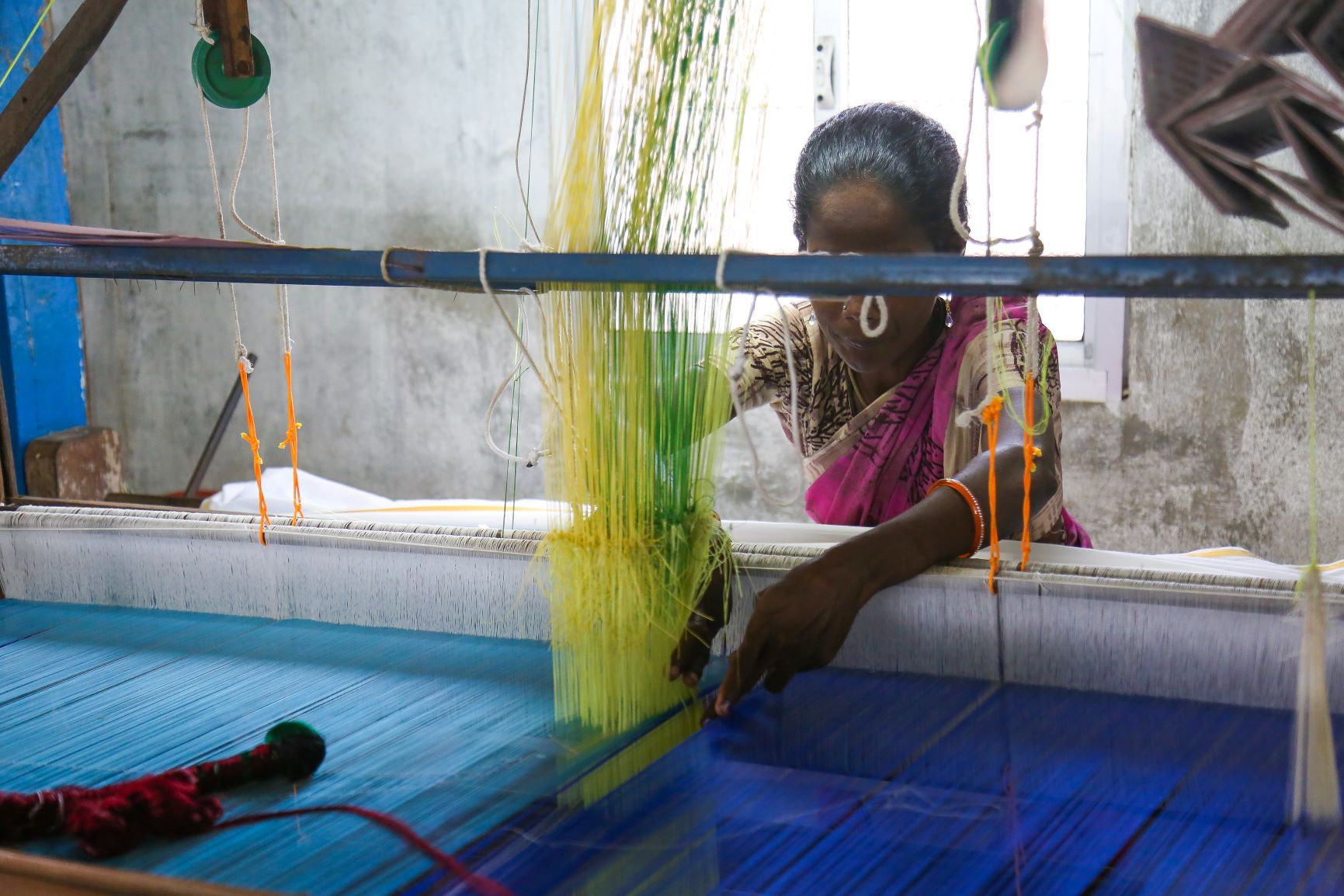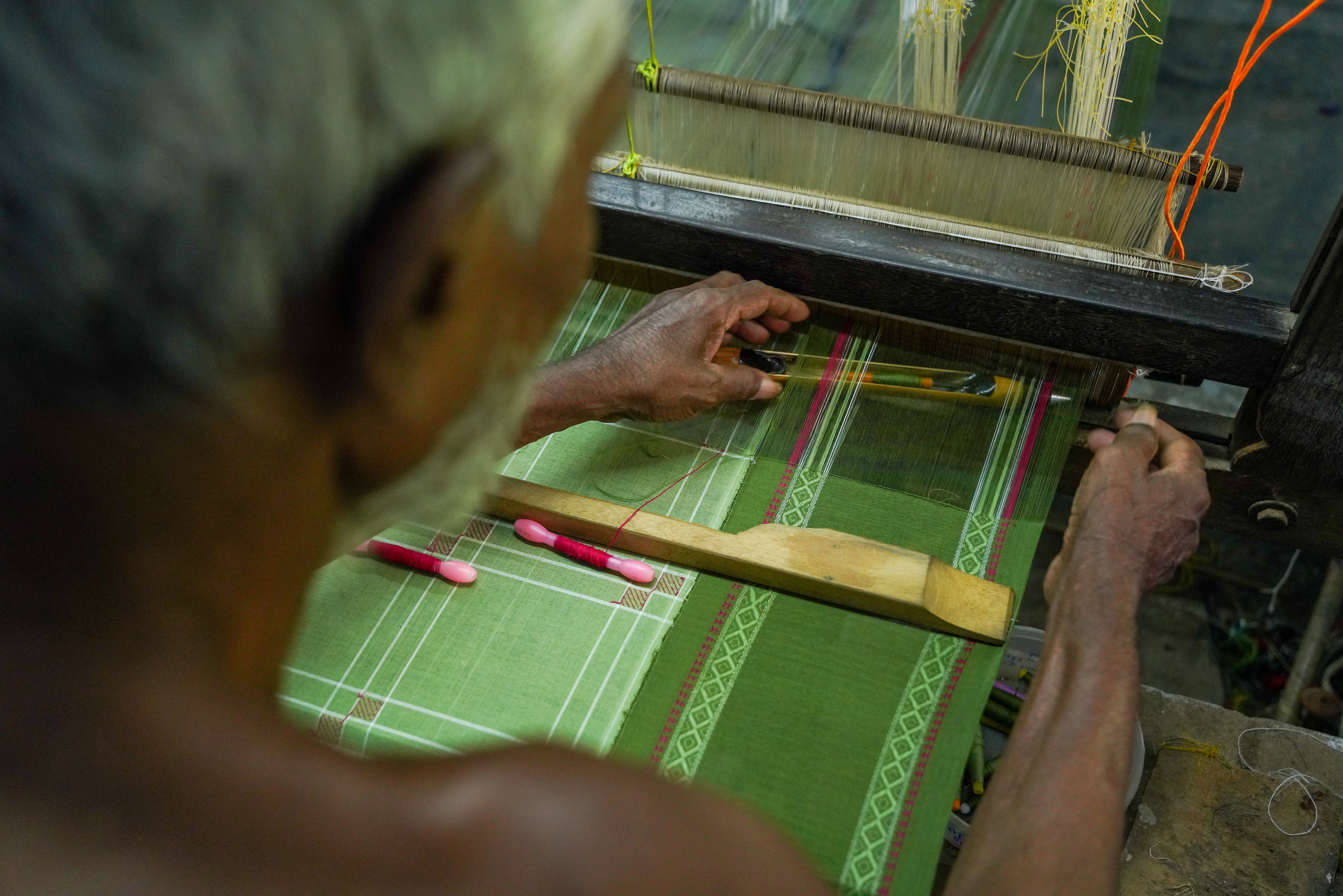
Artist, Artisan or Day Labourer?
Most of us today are no strangers to corporate culture and how people are treated as “resources”. Resource is a very powerful word since the person is valued and hence treated as a key part of the organisation. Some others in the arts & entertainment world know how “talent” is valued. Talent management agents & agencies learn to appreciate the time of these people & the many hours of brainstorming that could go into a show, a book or a piece of art. When it comes to the handloom world, it is only of late, that entrepreneurs & sellers have started to appreciate the artist inside the artisan. Thanks to social media forums, people have begun sharing knowledge about weaving, the struggles, the design & weaving process and learnt to appreciate not just the engineering precision that weaving calls for but also the aesthetics of motifs, designs and colors that only a true artist can understand. So we are often left wondering if weaving is an art or a science?

And yet does all this awe, wonder, appreciation & increased buying make any difference to how the weaving community is treated? How many of us are aware that weavers are often treated like day labourers and paid for every day’s work? The more skilled among them are able to negotiate a price per saree which is still way below market rates. So the weaver whose mathematical precision you appreciate when you notice a complex warp arrangement and the weaver whose color & design aesthetics inspires so many beautiful ladies to share their point of view still get paid like how a construction labourer does.
The question really is three fold:
- How does this affect the art?
- How does it affect the community?
- Why should WE care?
Effect on the Art & Craft
We often lament how saris woven in the yesteryears were far superior. We also speak with pride about how Khadi weaving was the backbone of our freedom struggle.

We read about how our fabrics were prized higher than the west and yet we are not willing to change the present to restore the art. To begin with, when the weaver is treated as a dispensable day labourer and not even an artisan, his or her attitude to work is exactly the same. You can’t treat & pay someone as a labourer and expect the eye for details that a corporate worker might have. The weavers come in with a mindset to move peddles for 8 hours and not create magic. After all, that’s what is expected for the wage they secure. This in turn means, the weavers refuse to go the extra mile. At Parvai, we have had issues with weavers refusing to touch challenging projects - this is very much a mindset problem too as is commercial.
Effect on Community
The weaving community is dwindling and we are often left with people who are either not enterprising enough to work in corporate jobs or strong enough to work in construction. The average age of weavers is 50-60yrs and the younger community refuses to touch the looms since the profession is neither well respected nor does it pay well. In a way, we ( by we I mean the entire sari buying population) are pushing the youngsters from considering a career in weaving. They would much rather be an engineer in the sea of engineers we produce or even a call center employee than become a weaver. Ever wonder why?
- Lack of social respect
- Lack of salary increments
- Lack of bonuses, perks, insurance
- Lack of recognition
- Lack of steady income
- And many more such reasons.
 Being treated as a labourer means there is no steady income. For instance, the last couple of weeks there have been terrible rains & cyclone alerts in Tamil Nadu. Several areas are water-logged. This would mean work would temporarily cease and workers would not get paid.
Being treated as a labourer means there is no steady income. For instance, the last couple of weeks there have been terrible rains & cyclone alerts in Tamil Nadu. Several areas are water-logged. This would mean work would temporarily cease and workers would not get paid.

Why should we care?
The question really is why should we NOT care. India has had a rich oral & apprenticeship tradition where the nuances of any art & craft from is passed from one generation to another. In fact, any documentation available is of preserved fabric swatches, some designs and ideas at best. Very little information is available about setting up a loom, warping, design development etc.. one relies heavily on the local talent pool to be guided in technical matters.

When one doesn’t value the community, these traditions are forgotten, compromises are made and the art gets treated as a task. Today, we are already facing challenges when it comes to implementing new ideas or recreating old designs which are not just visually similar but texturally. And all these problems are likely to compound and we might be left with very few designs done in a structurally weak format which might appeal to the insta-hopping crowd but not to true connoisseurs of textile.
If we value this heritage of ours, we should start by valuing the people, invest in improving the ecosystem and build a path where weaving is as lucrative & interesting as an IT job or any other coveted job. Subsidising yarn & zari does nothing much for the people but only benefits the middle men. Societies should continue to develop with modern world view. But before all that, can we stop treating artisans as day labourers please?





Leave a comment
This site is protected by hCaptcha and the hCaptcha Privacy Policy and Terms of Service apply.